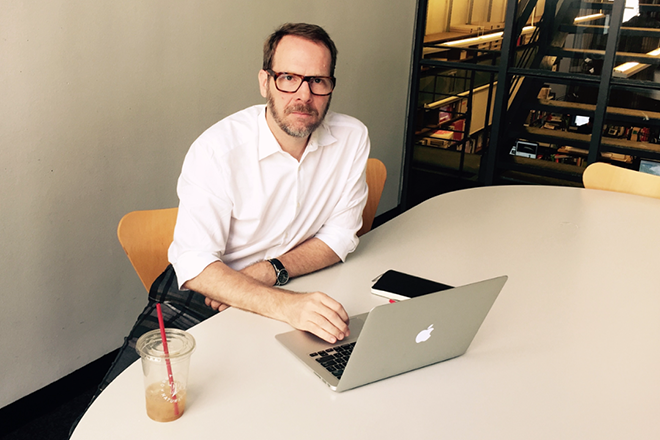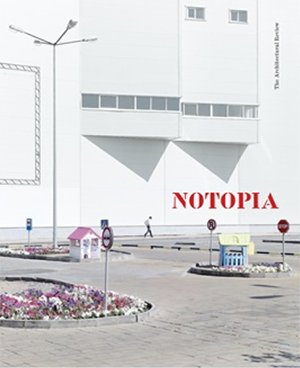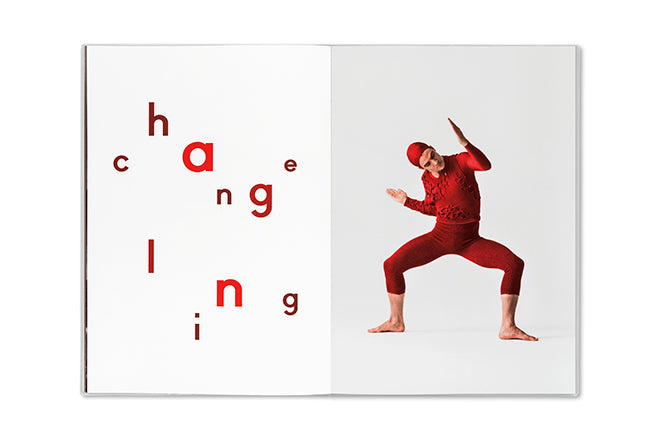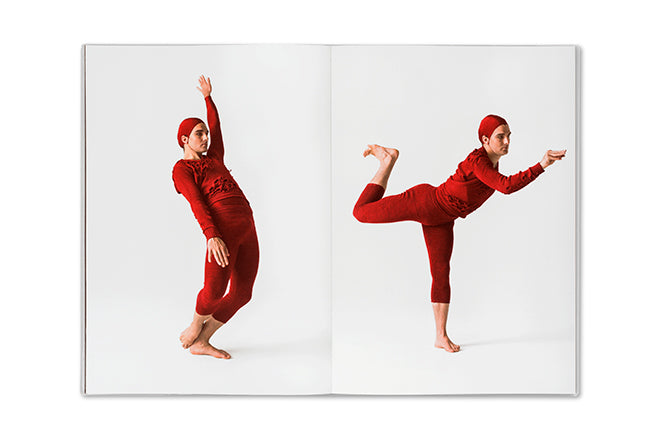
Abbott Miller, Dance Ink
New York based designer Abbott Miller first came to prominence through his multidisciplinary studio Design/Writing/Research, where he and Ellen Lupton developed the idea of the designer as author. He became a partner at Pentagram in 1999, and continues to work with content and form across book, magazine and exhibition design. We meet him as Dance Ink, a magazine last published in 1996, returns.
Where are you today?
At the Pentagram office in New York. I’m in the conference room we call ‘Partners,’ on the second floor past the row of desks where we partners sit. We use this room for our weekly meetings, but its a great place to sit in the morning.
What can you see from the window?
I’m on the Broadway side of the building. We have an unusual building that although its ‘normal’ depth, because Broadway and Fifth Avenue come to a point as they intersect, we have frontage on both Fifth Avenue and Broadway. I can see and hear the traffic on Broadway and 25th Street. You can feel the N/R train rumble underneath us every so often.
Which magazine do you first remember?
That is a surprisingly hard thing to recall. My best friend growing up had parents who seemed to keep all of their National Geographics, so you could see this classic yellow stripe across their bookshelves. I don’t remember my parents really being connected to magazines, just local newspapers.
My grandparents always had Readers Digest and the doctors office always had Highlights, a kids magazine. I remember thinking that kids that got Highlights must come from rich households. The notion of a kid having a subscription seemed exotic! This was a small town in Indiana…
What’s your favourite magazine this morning?
Without question it’s Architectural Review: it is so good and so thoughtful and so substantial. The writing, photography, and design are so in sync. I love the New Yorker, but AR is something I really cherish.
How did you first develop your love of modern dance?
It was all a direct result of designing the original Dance Ink, many years ago (above). I think designers have this happen a lot. For me dance and fashion were completely not on my radar. Then suddenly you are asked to design something and over time you begin to understand it and develop a perspective. It happened for me when my publisher Patsy Tarr asked me to work on Dance Ink, and then Dance Ink led to working with Geoffrey Beene, and suddenly you develop a perspective by absorbing the knowledge. Photography was the common denominator for the dance and fashion work, so suddenly you are also learning about and thinking about art direction.
The magazine is returning after 20 years. Why now?
The interim for us was 2wice, and all of the work we’d been doing the last few years on creating tablet-based apps. That ‘trilogy’ of apps (Passe-Partout, Dot Dot Dot, and Fifth Wall) was amazing and allowed our projects to have an entirely different publishing and distribution platform, but there is such an allure about the stability of print.
In many ways returning to print feels closer to the mission of the 2wice Arts Foundation, which is to create a record of and awareness of performance and dance. The apps do that too, but the physicality of print is somehow more fundamental to the premise of creating something lasting out of what is such an ephemeral art form. We also sensed that the niche we filled many years ago was vacant, and there is a new generation of performers and choreographers.
You are editor and art director of Dance Ink; how do you view the two roles?
Compared to my editorial role was with 2wice, and in other book projects, the editorial component of the new Dance Ink is straightforward and minimal. From the issue you can see that its heart and soul is image. That is not to say that we won’t feature more writing in subsequent issues.
Over those 10 years almost every aspect of magazine production has changed. How has this affected the relaunch issue?
I think the physical aspects of production (offset printing and binding, etc) are surprisingly similar. But at the ‘front end’ of shooting the issue and shooting digital video, as well as getting the word out through social media, the framework has changed.
We may not have a bigger audience than we had in 1996, but there are more ways for us to make our larger efforts known to a broader audience
What are you most looking forward to this week?
My daughter just graduated from high school and we are having a dinner for her on Saturday: she will be starting school at Cooper Union in the fall, which is where both me and my wife Ellen (Lupton) went to school.
What are you least looking forward to this week?
I’ve got a bit too much on my plate, and sometimes the pressure takes on a physical dimension. I would like the chance to be more reflective and contemplative, but there is so much urgency in everyday life that its hard to maintain a calm and deliberate temperament.
What will you be doing after this chat?
Going into a meeting about a large and curatorially complex exhibition we are working on. I love working in physical spaces, and if this one really happens, it should be a stunning environment to do a show in!











